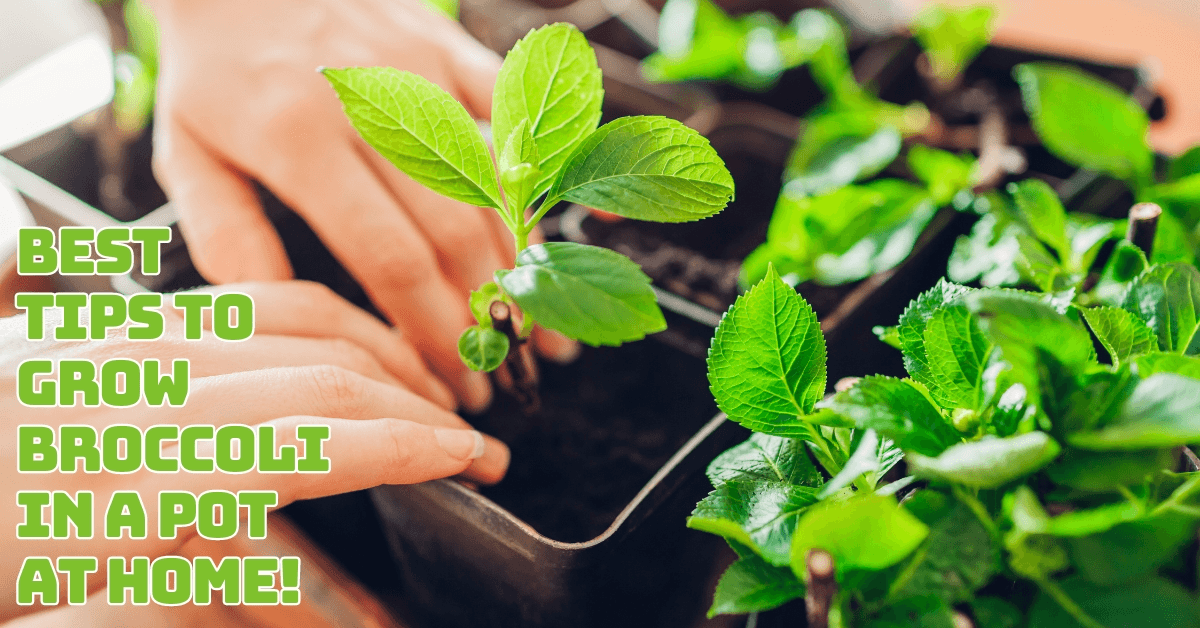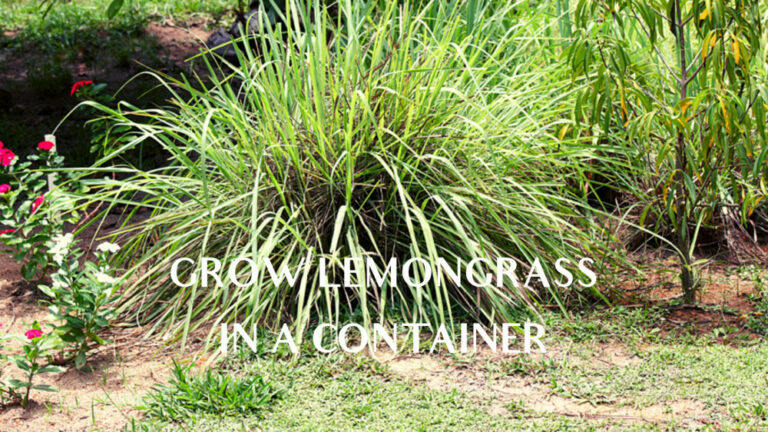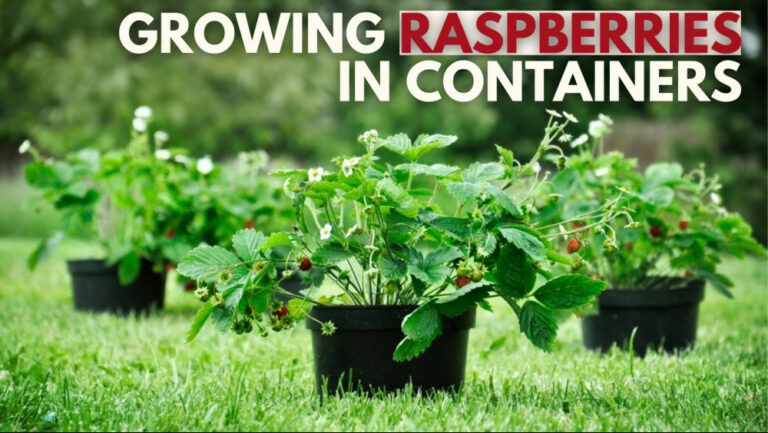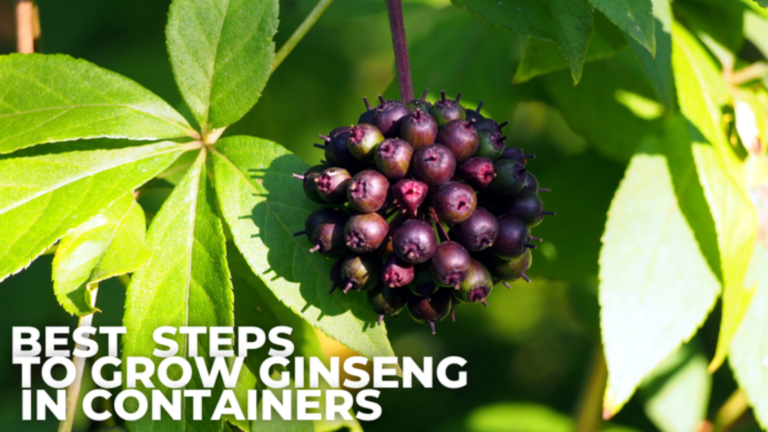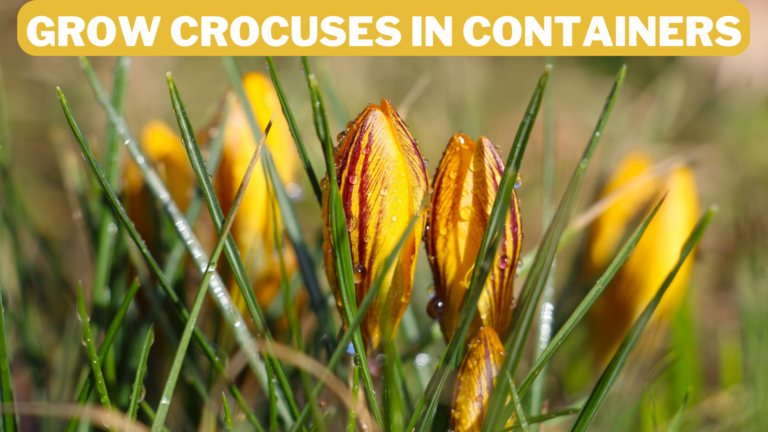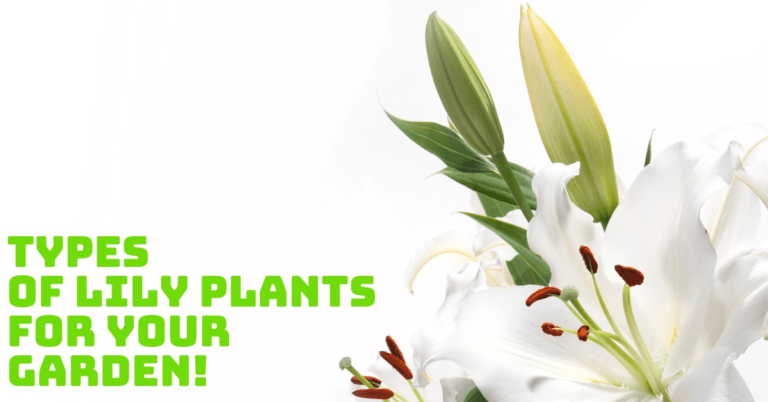Best Tips To Grow Broccoli In A Pot At Home
Best Tips To Grow Broccoli In A Pot At Home
Growing broccoli in a pot is a fantastic way to enjoy fresh, home-grown vegetables, even if you're short on space.
In this ultimate guide, we'll walk you through the steps to successfully grow broccoli in a pot right on your patio or balcony.
From choosing the right pot to ensuring proper care, you'll have all the tips and tricks to harvest delicious, nutrient-rich broccoli at home.
Origin Of Broccoli
Broccoli is a wild cabbage cultivar. Wild cabbage is thought to have originated on the Mediterranean's northern and western beaches, where it was domesticated thousands of years ago.
That domesticated cabbage was later bred into many varieties, including broccoli, cauliflower, cabbage, kale, kohlrabi, and brussels sprouts, which are still classified as cabbage.
The meaning of Roman references to a cabbage-family vegetable that could have been broccoli is unclear.
Pliny the Elder, a Roman naturalist, wrote about a vegetable that meets the characteristics of broccoli, and some vegetable scholars recognize broccoli in Apicius' cookbook.
Broccoli was cultivated on a test plot near Salinas, California. As its name suggests, long before, it was consumed elsewhere.
Although broccoli was first described in France in 1560, it was still so obscure in England in 1724 that Philip Miller's Gardener's Dictionary (1724 edition) referred to it as “sprout colli-flower” or “Italian asparagus.”
Thomas Jefferson was an experimental gardener in the American colonies, with a large circle of European correspondents from whom he received packets of seeds in return for unusual crops from the Americas, such as tomatoes.
On May 27, 1767, he noticed the planting of broccoli, radishes, lettuce, and cauliflower at Monticello.
Despite this, broccoli was still considered an exotic plant in American gardens. In A Treatise on Gardening by a Citizen of Virginia, published in 1775, John Randolph felt compelled to explain broccoli: “The stems we will eat like asparagus and the heads like cauliflower.”
Broccoli was first commercially grown in the United States in 1922 by the D'Arrigo brothers, immigrants from Messina, Italy, whose company made some experimental plantings in San Jose, California.
A few containers were delivered to Boston, where the North End had a solid Italian immigrant community.
The broccoli business took off thanks to D'Arrigo's brand name “Andy Boy,” named after Stephano's two-year-old son, Andrew, and radio commercials.
Broccoflower is a hybrid between broccoli and cauliflower, both cultivars of the same species. It was first grown in Europe around 1988. It features pale green heads densely packed like cauliflower but has a broccoli flavour.
Different Types Of Broccoli
When it comes to growing broccoli, there are several varieties, each with unique characteristics. Here are some of the different types of broccoli you might consider:
1. Calabrese Broccoli (Brassica oleracea var. Italica)
The broccoli in the grocery store is almost always a kind of Calabrese or regular broccoli (Brassica oleracea var. Italica). Calabria is the name of a region in southern Italy (think the toe and ankle of the Italy boot).
Calabrese broccoli has a huge central crown with little blossoms called florets. These broad, blooming branches give broccoli a distinctive appearance; they resemble miniature trees!
2. Sprouting Broccoli (Brassica oleracea var. Italica)
Sprouting broccoli (Brassica oleracea var. Italica) is a stalky, tall plant with individual florets rather than a central head. The leaves, stalks, and florets are all edible.
However, they are slightly more bitter than regular broccoli. Broccoli sprouts, germinated broccoli seeds grown for a few days and then added to salads and sandwiches, may come up while looking for types online.
Sprouts are great, but they're not the same as broccoli sprouts. Sprouting broccoli is often planted in the fall and overwintered for harvest in the early spring.
Cold temperatures (below 50°F/10°C) are required for floret production for 6 to 8 weeks. Overwintering may be difficult, but early spring harvests are a great relief after a long winter!
3. Chinese Broccoli (Brassica oleracea var. alboglabra)
Chinese broccoli (Brassica oleracea var. alboglabra) is a Chinese broccoli variety. Other names for it include Chinese kale, gai lan, kailan, and others.
Chinese broccoli features huge green leaves and robust stems. It's noted for having a bitter flavour, but soaking it in cold water before cooking helps to alleviate that.
4. Broccoli Rabe (Rapini) (Brassica rapa subsp. rapa)
Broccoli rabe (Brassica rapa subsp. rapa) resembles broccoli in appearance, although it belongs to the same subspecies as turnips.
The green leaves, sometimes called rapini, are used like turnip greens in cooking. The focus isn't on the little, spiky, broccoli-like florets. Rather, the slightly bitter leaves of rapini are used in southern Italian cuisine.
Broccoli rabe grows quite quickly. Thanks to its cut-and-come-again growth from the beginning until the season's conclusion, you'll have an all-you-can-eat buffet of delectable greens.
5. Broccolini (Brassica oleracea var. italica alboglabra)
What's the difference between broccoli rabe and broccoli florets, or baby broccoli vs broccoli florets?
On the other hand, Broccolini (Brassica oleracea var. italica alboglabra) is a broccoli hybrid – a cross between traditional and Chinese broccoli.
It's sometimes called “baby broccoli,” although that's simply because of the smaller stems and florets.
Its fascinating history includes several years of development via hand pollination rather than genetic engineering. There is even a trademark for the name “Broccolini.”
6. Destiny Broccoli
In Zones 7-11, ‘Destiny' is a hybrid cultivated for high heat tolerance. In 70 to 75 days, it produces small to medium green heads with purple tinges.
7. DiCicco Broccoli
This Italian heirloom produces small to medium blue-green heads that mature non-uniformly in Zones 3-10. This means broccoli plants produce heads at different speeds, which is ideal for a home garden.
8. Eastern Magic Broccoli
This hybrid was created for the cooler northeastern US and Canadian climates and thrives in spring and fall.
It yields big blue-green crowns with excellent flavour. ‘Eastern Magic' is highly heat resistant, allowing growers in cooler climates to extend their growing season into the summer. It matures in 60-65 days and is a fast grower.
9. Blue Wind Broccoli
Blue Wind broccoli is an early bloomer with tight, huge heads and bluish-green leaves on the top of the plant.
It usually matures in less than 60 days. Blue Wind broccoli, like kale, is deliciously cooked or steamed.
10. Gypsy Broccoli
This is one of the earliest blooming broccoli plants, maturing in about 60 days. It has a strong root system and produces well even in less-than-ideal soil conditions.
Gypsy broccoli features well-domed green heads and beads that are medium to small in size. It is also heat tolerant and generates a large number of side shoots.
11. Diplomat Broccoli
Diplomat broccoli features dark green, thick, homogenous heads four to six inches across. It's mildew-resistant in a variety of ways.
They bloom in just over two months and thrive in chilly climates that only get slightly warm throughout summer.
12. Express Broccoli
This mid-season broccoli matures in around 75 days, producing many side shoots and deep blue-green heads with tight beads and a six to seven-inch diameter.
13. Fiesta Broccoli
Fiesta broccoli produces broccoli heads that are highly domed and sturdy, with thick stalks. It takes around 70 days for Fiesta broccoli to mature.
Plant it in the late summer to allow it to mature in the fall and winter. It produces limited side shoots and has a low heat tolerance once fully developed.
14. Marathon Broccoli
Marathon broccoli develops in just over 60 days, and it's best grown in the fall and winter months if you live in the Pacific Northwest or Northern California.
15. Big Boy Broccoli
Big Boy Broccoli is a young hybrid cultivar that produces soft, thick stems that go well in soups and salads.
Ways To Grow Broccoli In A Pot
Broccoli is the one veggie I have always enjoyed. I used to eat it raw as a youngster. Now, I like it briefly sautéed with teriyaki chicken to turn bright green and slightly tender and soak up the sauce for a flavourful twist.
However, the ideal method to eat this nutrient-dense brassica is right out of the garden. Alternatively, start with a container garden if you're short on space.
Have you tried growing this cruciferous veggie in a pot before?
1. Choosing The Right Pot To Grow Broccoli
Growing this huge brassica in a pot can be done in two ways. You can plant one per 12-inch by 12-inch pot, giving the leaves and heads the recommended spacing – about a foot or more between plants in an outdoor garden – or one per 12-inch by 12-inch pot.
Alternatively, you can group a few plants to create slightly smaller main heads but more secondary (side shoot) heads later.
In this scenario, an 18-inch wide, 12- to 18-inch deep pot could hold three plants. Your pot should be 12 inches deep to allow root growth.
It's entirely up to you and the space available in your container garden. I decided to grow my veggies in a larger pot.
The type of pot you use is the next factor to consider. Make sure it's a light-coloured pot, as dark-coloured pots might cause the soil to overheat on hot days.
Terra cotta or a lighter-coloured plastic pot works well. Remember that terra cotta pots might dry out faster than plastic because of their porous nature.
2. Soil Requirements To Grow Broccoli In A Pot
Broccoli thrives in well-draining, nutrient-rich soil when grown in pots. Remember to use a high-quality potting mix with added compost or organic matter to improve fertility.
Ensure the soil pH is slightly acidic to neutral, between 6.0 and 7.0. Broccoli plants like moist soil without waterlogging, and consider adding a slow-release fertilizer to support healthy growth throughout the season.
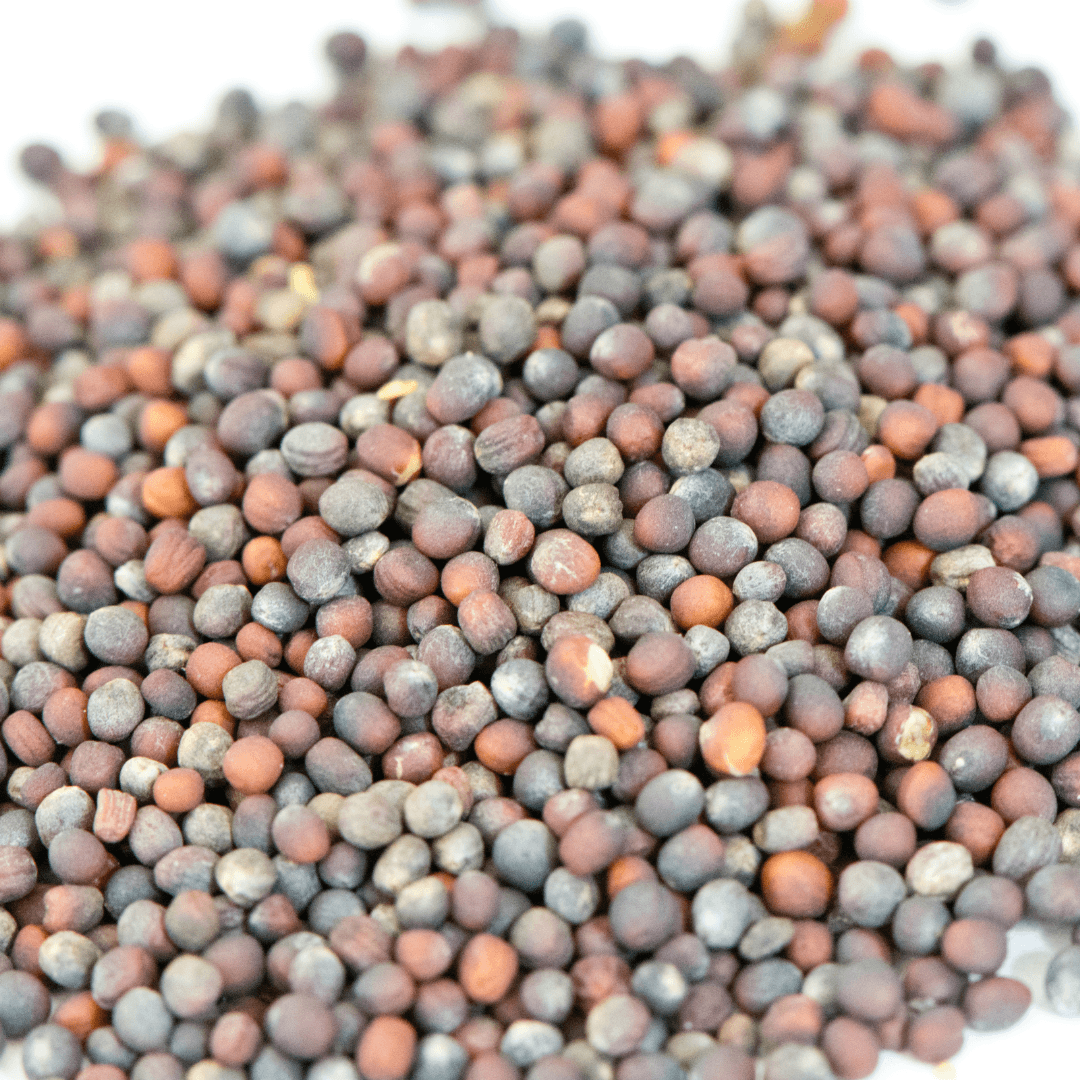
3. Growing Broccoli From Seeds
Broccoli seeds have a rich purple-brown colour and are spherical, like peppercorns. They're quite large in comparison to other seeds.
They can be started in trays or directly in pots where they will grow. Then, make a small hole about ¼ to ½ inch deep with your finger.
Put two seeds in each hole just in case one doesn't germinate. Cover with soil and water gently with a spray bottle or a watering can with a showerhead to avoid dislodging seeds.
Maintain wet but not soggy soil. Some seeds, such as broccoli seeds, require sunshine to germinate.
Set your trays on a sunny windowsill or shine a grow light at the sprouting seedlings as soon as you see them germinate — after 5-10 days.
If both seeds germinated, thin to one plant per cell after a few days by cutting the smaller seedling with scissors.
If you're using a grow light, keep it one to two inches away from the sprouts and move it as they grow.
Moving your seedling tray on a windowsill frequently is best to keep the shoots from tilting towards the light.
If you place the grow light too far away, your seeds will grow “leggy” in their hunt for more light.
The difficulty with this is that the stalk will become weaker with time. Fortunately, immediately transplanting the seedlings to their permanent pot is a simple solution to this problem.
4. Transplanting Broccoli Seedlings
When transplanting broccoli seedlings, use a conventional potting mix (not seed starting mix) and ensure the new pots have drainage holes in the bottom.
If you sowed your seeds all at once in a single pot with no compartments, carefully separate them and transplant each broccoli seedling into its own pot.
You can skip the transplanting step if your seedlings were started in peat pellets. Keep the broccoli transplants under the grow lights and water and fertilize them regularly.
5. Caring For Broccoli Plants In A Pot
The broccoli plants are simple to care for once placed in the pot. Place them in full daylight, near a window or under a grow lamp if you're growing them indoors.
They'll be happy if you give them one to one and a half inches of water every week.
Keep the soil moist but not wet, and remember that dirt in pots dries up more quickly than soil in the garden. Stick your finger about an inch into the earth to see if your plants need water.
You don't need to rinse if the soil feels damp. If it appears to be dry, add some water. You can forego watering for several days to a week if it rains. In the event of heavy rain, you can quickly relocate your tent.
6. Watering Broccoli Plants In A Pot
Mature broccoli plants, like seedlings, prefer consistently moist soil. But be careful not to overwater the plants since this can lead to root troubles and decay.
Because larger pots hold moisture better, I've found that watering every other day or two days is the optimum watering schedule.
7. Fertilizing Broccoli Plants
Side-dress broccoli with aged manure at planting time and again in the middle of the season, when half of its growth is complete.
Alternatively, a slow-release, all-purpose fertilizer can be applied during planting. A two-weekly application of liquid fertilizer will be enough.
8. Pruning Broccoli Plants
Pruning is the finest approach to controlling the growth of a vigorously developing broccoli plant. Pinch out the freshly forming side shoots during the plant's growing season.
Cut wilting leaves from the sides as well. Excessive pruning, on the other hand, should be avoided.
9. Mulching Broccoli Plants In A Pot
Broccoli enjoys chilly soil. Therefore, mulching is essential. Covering the soil with a 2-inch layer of chopped leaves, hay, or straw is sufficient.
10. Pests & Diseases Of Broccoli
Insects love broccoli plants almost as much as broccoli growers. Here are some of the most frequent broccoli pests and diseases and how to deal with the problems they cause:
The pests in consideration are the larvae of moths and butterflies. White or gray moths may be seen fluttering around the plant, indicating that their offspring will soon cause problems.
Cabbage worms consume broccoli leaves and cause serious damage. Handpick as many as you can. Young larvae are resistant to insecticides, including Bacillus thuringiensis or spinosad.
These tiny black beetles puncture the leaves, leaving many small holes. Continuing to feed seedlings might hurt them and reduce mature plant production.
Make use of a flea beetle-specific insecticide. They spend the winter underground, and diligent end-of-season cleanup can help reduce their numbers.
Aphids are small, soft-bodied insects that feed on the undersides of broccoli leaves, causing them to discolour and wrinkle.
A vigorous hose spray knocks them off the plant. Severe infestations can be treated with insecticidal soap or neem oil.
Cutworms slice off young seedlings at the ground level. They work at night, so you may find that your broccoli row has been destroyed by little lumberjacks that have felled otherwise healthy plants when you wake up.
Plant sturdy seedlings rather than seeds, and wrap the stem piece at soil level with a cardboard or cloth “collar.”
It has been observed that they penetrate through mature plant crowns. To keep the plants safe, use B. thuringiensis or spinosad sprays.
Broccoli plants with powdery mildew appear to have been sprinkled with flour. The broccoli leaves are the first portions of the plant to be impacted.
If fungus spores aren't managed soon, they can spread to the stems and head.
Plenty of sunlight, proper air circulation, and dry plants, as with most funghi, go a long way toward controlling the problem.
11. Harvesting Broccoli
Your broccoli plants should be ready to harvest in 50-70 days from seed if all goes according to plan.
After transplanting seedlings outside, you'll have harvestable broccoli in 3 to 4 weeks! Broccoli has the advantage of being harvested numerous times before flowering due to the summer heat.
FAQ
1. Can I Grow More Than One Broccoli Plant In The Same Pot?
Planting one broccoli per pot is best to give it enough space to grow and develop a large, healthy head.
2. Can I Reuse The Soil From My Broccoli Pot For The Next Growing Season?
It’s best to refresh or replace the soil to avoid disease buildup and nutrient depletion. If reusing, amend with fresh compost and fertilizer.
3. Is It Normal For Broccoli Leaves To Turn Purple?
Purple leaves can indicate phosphorus deficiency or exposure to cold temperatures. Ensure your plant is well-fed with a balanced fertilizer and protected from frost.

Conclusion
In conclusion, growing broccoli in a pot is an accessible and rewarding way to enjoy fresh, healthy vegetables at home.
By following the steps outlined in this guide, you can successfully grow broccoli in a pot, even in limited spaces. You'll harvest your delicious broccoli quickly with the right care and attention. Happy gardening!
I trust you enjoyed this article on the Best Tips To Grow Broccoli In A Pot At Home. Please stay tuned for more blog posts to come shortly. Take care!
JeannetteZ
>>>Please click here to read my all-inclusive article about Container Gardening<<<
>>>Are you interested in homegrown herbs and medicine? Please click here to find out more about it!<<<
Your Opinion Is Important To Me
Do you have thoughts, ideas, or questions? I would love to hear from you. Please leave me your questions, experience, and remarks about this article on the Best Tips To Grow Broccoli In A Pot At Home in the comments section below. You can also email me at Jeannette@Close-To-Nature.org.
Disclosure
This post may contain affiliate links. I earn from qualifying purchases as an Amazon Associate and other affiliate programs. Please read my full affiliate disclosure.
You might also enjoy these blog posts:
Easy Steps Of Growing Lime Trees In Pots
Dog Tail Language – What Your Dog’s Tail Can Tell?

